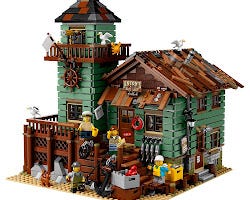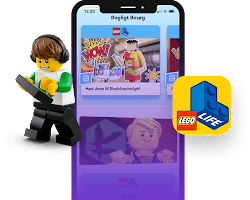How Brands Thrive by Building Communities
In an era where customer preferences and market dynamics are continuously evolving, building a community around a brand has become an indispensable strategy for achieving sustained success. Surprisingly, a significant number of marketplaces are still predominantly fixated on transactional relationships, overlooking the immense potential that lies in cultivating communities among their customers.
Crafting spaces where customers can connect, share, and develop a sense of belonging has proven invaluable in brand-building endeavors.
This article sheds light on the significance of communities and explores how two very different companies like LEGO and Shein have successfully harnessed the power of community building.
Why Community Matters
Communities are more than just social gatherings; for brands, they are the lifeblood that drives customer engagement to new heights.
Today, the distinguishing factor for successful brands is their ability to foster a sense of belonging among customers, transforming them into passionate advocates.
Picture this: an exclusive digital lounge where your customers can gather, discuss, and share stories. This kind of personalized space goes beyond selling; it engages. By making customers feel valued, they are more likely to remain loyal. In today’s landscape, customer loyalty transcends quality products or services; it’s about creating an experience and value system that resonate on a deeper level.
When customers are actively engaged in a community, they are prone to share their positive experiences. This organic sharing through social media and word-of-mouth is exponentially more impactful than traditional advertising. It's genuine. Your brand visibility can skyrocket without the need for exorbitant advertising budgets.
Data is vital for understanding customer preferences. A community serves as a treasure trove of insights through continuous interaction and feedback. This information is invaluable and can be the difference between a product’s triumph or downfall.
Case Study: LEGO’s Mastery in Community Building
LEGO, a company synonymous with innovation, has masterfully utilized community-building to maintain its relevance and appeal among all age groups.
LEGO Ideas: Launched in 2008, LEGO Ideas is a community-driven platform that empowers users to submit their brick designs for others to vote on. Winning designs are transformed into official LEGO sets. This initiative allows LEGO to tap into the creative pulse of its dedicated fanbase.

The Old Fishing Store: This charming set was designed by a fan named Marcos Bessa and was inspired by the traditional fishing villages of Portugal. Available on Amazon. 
The Saturn V Rocket: This massive set was designed by a team of fans and is a faithful recreation of the real-life Saturn V rocket that took astronauts to the moon. Available on Amazon LEGO User Groups (LUGs): LUGs are gatherings of LEGO enthusiasts, supported by the LEGO Ambassador Network, which facilitates direct communication between the groups and LEGO representatives. LUGs have evolved into a rich culture where fans not only share their passion but also have a voice in LEGO's community initiatives.
LEGO Life: A social network designed for the younger audience, safeguarding their online experience while allowing them to share creations and engage in challenges. With over 10 million registered users, LEGO Life showcases the power of community engagement in nurturing brand loyalty among the next generation.

Source: Lego
Case Study: Shein’s Strategic Community Building
Shein has redefined the fast fashion industry through tactical community-building initiatives.
Shein’s Style Gallery: This platform allows customers to upload photos wearing Shein outfits. It’s a hybrid space combining user-generated content with an e-commerce platform. Others can view, comment, or purchase the displayed outfits, fostering an active fashion community.
Social Media Integration: Shein's robust social media presence includes influencer collaborations, hashtag challenges, and live events. These strategies have enabled Shein to transition from being just a retail company to crafting a lifestyle around its brand.
SHEIN X: This innovative platform allows aspiring designers to submit their designs. Shein supports these emerging talents by providing them with exposure to a global audience. Read more here.

Source: Here
Playbook for Crafting Communities
Step 1: Understand Your Audience
Before diving into community building, it’s essential to have a clear understanding of your target audience. Gather insights into their preferences, values, challenges, and what they seek from your brand.
Example: Gaming company Riot Games focuses on building communities around their games like League of Legends. They understand that their audience craves competition, collaboration, and communication with other players. Their forums and social media channels cater specifically to these desires.
Step 2: Build within your Product or Choose the Right Platforms (or both)
Determine where your audience spends their time. Should you build something on your own in your product, or leverage existing platforms? Identifying the right platforms is critical.
Step 3: Create or Leverage User-Generated Content
Content is king when it comes to community engagement. User-generated content (UGC) is a potent tool for building communities. Encourage your users to create content related to your brand. Create content that resonates with your audience, whether it’s educational, entertaining, or inspiring.
Example: GoPro encourages its users to share action footage captured using GoPro cameras. They host regular challenges and feature the best content on their channels, creating an engaged community of adventure enthusiasts.
Step 4: Foster Interaction
Communities thrive on interaction. Create spaces where your audience can discuss, share experiences, and contribute content. Recognize and reward your community members through shoutouts, swag, exclusive content, or early access to new products.
Example: Adobe has the Adobe Creative Cloud community where users can share creations, participate in contests, and exchange tips and tricks.
Step 5: Keep Your Finger on the Pulse
Communities evolve. Stay in tune with the needs and wants of your community and be ready to adapt. Regularly gather feedback and make necessary adjustments. Be transparent and communicate the steps you’re taking to address issues.
Parting Thoughts
Building a community around your brand is more than just a marketing strategy; it’s about forging relationships and adding value to your customer’s lives. Cultivating and nurturing communities can be the driving force behind your brand’s success. It’s time to consider implementing community-building practices to unlock your brand's potential.
